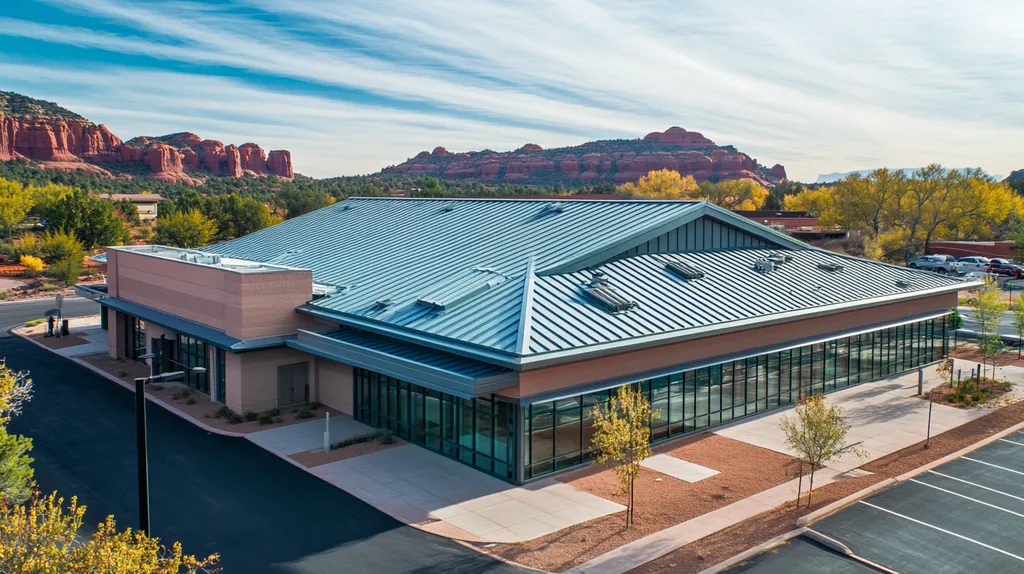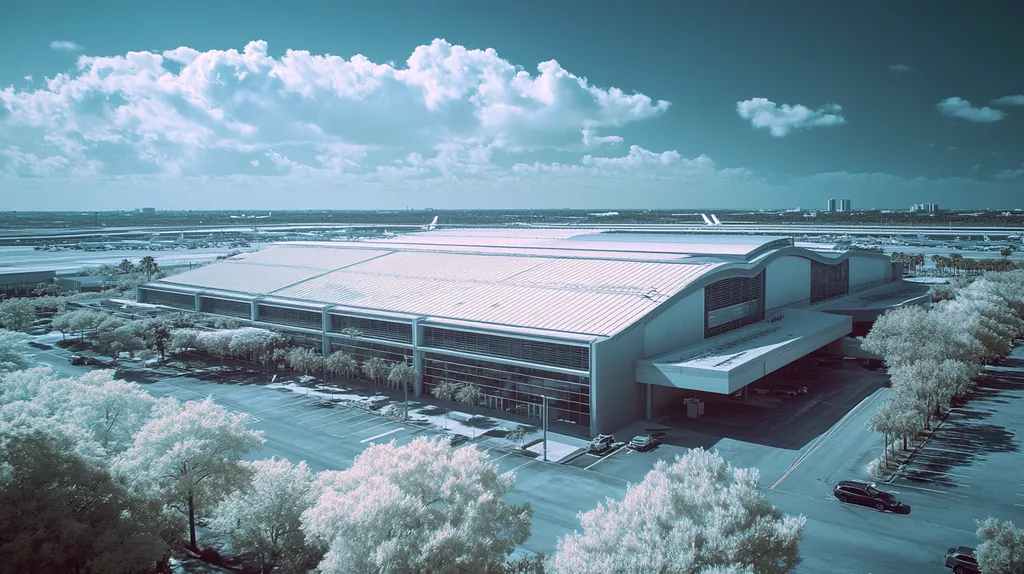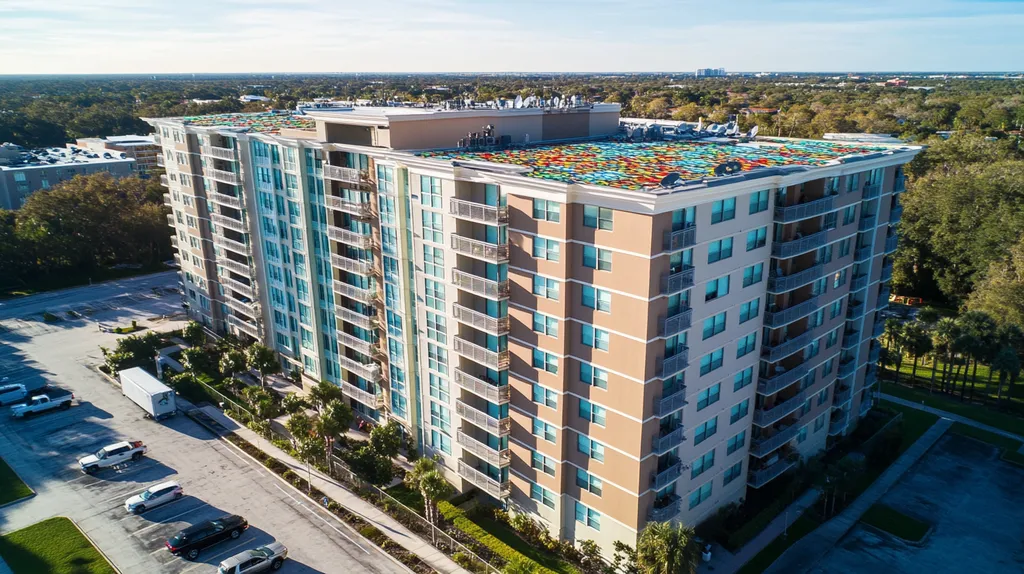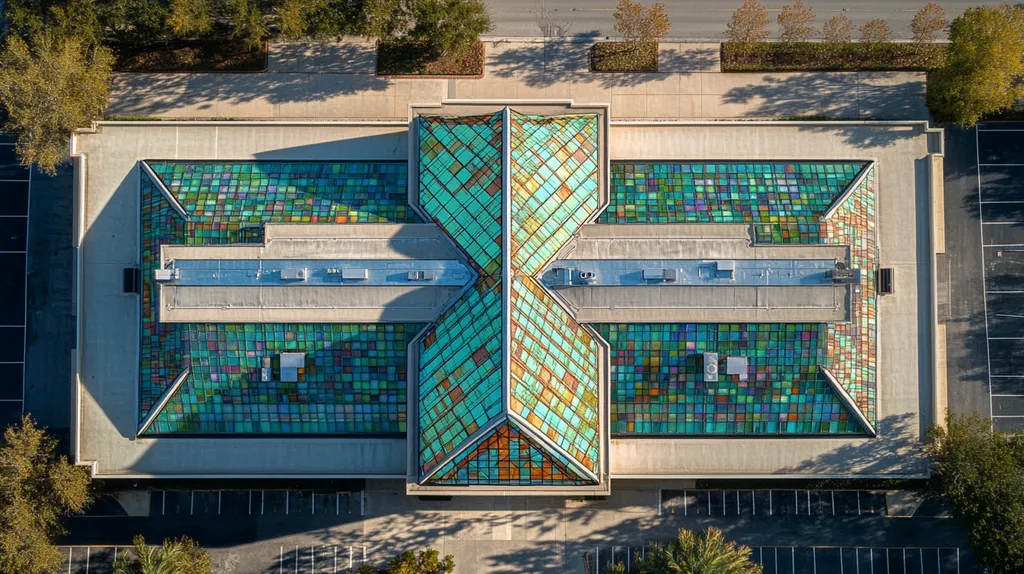Industrial roofing contractors routinely miss the mark on project cost estimates by 25-40%, creating devastating budget overruns that threaten facility operations and capital planning. A comprehensive analysis of 500 recent installations reveals that traditional pricing models consistently fail to capture crucial variables affecting final costs.
From overlooked accessibility challenges to ignored lifecycle implications, systemic flaws in established pricing strategies are undermining project success across the sector. The resulting financial impact extends far beyond initial installation, often doubling anticipated expenses over the roof’s lifespan.
This analysis examines the root causes behind estimation failures and presents data-driven solutions that can dramatically improve cost prediction accuracy.
SECTION 1: CURRENT PRACTICES
The industrial roofing sector faces a critical challenge: traditional pricing methods are failing to deliver accurate cost predictions. Industry data shows that 65% of industrial roofing projects exceed their initial budgets, with some overruns reaching double the original estimate. This systematic failure stems from oversimplified pricing models, incomplete cost calculations, and outdated estimating procedures that don’t reflect modern roofing complexities.
Common Pricing Models in Industrial Roofing
The dominant square-footage pricing model remains firmly entrenched in industrial roofing, despite its fundamental flaws. This approach reduces complex installations to simple multiplication, ignoring crucial variables like roof accessibility, structural requirements, and energy code compliance.
Time-and-materials pricing, another standard approach, shifts excessive risk to property owners while providing minimal cost certainty. This model offers no incentive for contractor efficiency and can result in runaway expenses when projects face unexpected challenges.
Performance-based pricing represents an emerging alternative, but adoption remains low due to industry inertia. This model aligns contractor compensation with project outcomes but requires sophisticated tracking systems many contractors haven’t implemented.
Even when contractors attempt to incorporate complexity factors, most rely on oversimplified multipliers that fail to capture true project requirements. These adjustments often amount to educated guesses rather than data-driven calculations.
Typical Cost Components and Their Calculation
Material costs dominate roofing budgets but are frequently miscalculated due to waste factors, market volatility, and specification changes. Current practices often use historical pricing that doesn’t reflect real-time market conditions, leading to significant variances between estimates and actual costs.
Labor calculations typically rely on outdated productivity rates that don’t account for modern safety requirements and installation complexities. The resulting estimates frequently understate the true labor investment required for quality installation.
Overhead and profit calculations remain surprisingly arbitrary in many cases. While contractors need these margins for sustainability, current practices often lack transparency and consistency in how these crucial components are determined.
Equipment and logistics costs receive inadequate attention in traditional calculations. Modern industrial roofing requires sophisticated machinery and careful staging, yet these expenses are often treated as simple percentages rather than project-specific calculations.
Standard Contractor Estimating Procedures
Most contractors rely heavily on spreadsheet-based estimating tools that haven’t evolved with modern roofing technology. These legacy systems often miss crucial cost drivers and fail to account for building-specific challenges.
Site surveys frequently lack the detail necessary for accurate estimating. Quick visual inspections and basic measurements substitute for comprehensive evaluation, leading to costly surprises during project execution.
Quality control factors rarely receive adequate consideration in standard estimating procedures. The cost impact of proper supervision, testing, and documentation often emerges only after project commencement.
Value engineering opportunities typically get overlooked in traditional estimating processes. Contractors often propose standard solutions rather than exploring innovative approaches that could optimize both performance and cost.
Risk assessment remains a major weakness in current estimating procedures. Many contractors rely on general contingency factors rather than conducting thorough project-specific risk analysis.
SECTION 2: SYSTEMIC ISSUES
The industrial roofing sector faces critical challenges that threaten project success and financial stability. Traditional approaches consistently fail to account for real-world complexities, leading to devastating budget overruns and compromised installations. While 82% of industrial roofing projects experience some form of cost escalation, most of these increases stem from systemic issues that could be identified and addressed during the planning phase.
Inaccuracies in Material and Labor Cost Assumptions
Material pricing volatility represents one of the most significant threats to accurate cost estimation. Recent supply chain disruptions have created unprecedented price swings, with some roofing materials experiencing cost increases of over 40% within months.
Labor calculations frequently rely on outdated productivity metrics that fail to account for modern installation requirements. Enhanced safety protocols, detailed documentation requirements, and increasingly complex system specifications demand substantially more labor hours than traditional estimates suggest.
Regional labor market dynamics create additional complexity that standard estimating practices ignore. Areas experiencing construction booms face severe skilled labor shortages, driving up costs and extending project timelines far beyond typical assumptions.
Waste factors represent another critical blind spot in material calculations. While many estimates use a standard 10% waste factor, complex roof geometries and installation requirements can push actual waste rates to 25% or higher.
Impact of Roof Design Complexity Underappreciated
Modern industrial roofs serve as sophisticated building systems rather than simple weather barriers. Integration requirements for solar installations, HVAC equipment, and safety systems create complex technical challenges that dramatically impact installation costs.
Building code evolution has introduced new performance requirements that demand more sophisticated design solutions. Enhanced wind uplift resistance, thermal performance targets, and drainage requirements often necessitate multi-component systems with precise installation sequences.
Existing roof conditions frequently create unexpected complexity that standard estimates ignore. Deteriorated deck conditions, inadequate structural support, and obsolete flashings often require extensive remediation before new system installation can begin.
Interface details between different building systems demand increasingly complex solutions. Maintaining continuity between roofing, wall systems, and penetrations requires specialized materials and installation procedures that add significant cost.
Overlooking Site Accessibility and Safety Challenges
Site logistics pose major challenges that traditional pricing models fail to capture. Limited staging areas, restricted crane access, and material handling constraints can double or triple labor requirements for routine installation tasks.
Active facility operations create unique challenges that impact project efficiency. Coordinating work around production schedules, maintaining clean zones, and protecting sensitive equipment demands sophisticated project management and additional resources.
Modern safety requirements substantially impact productivity rates and equipment needs. Fall protection systems, air quality monitoring, and specialized access equipment represent significant costs that many estimates overlook.
Urban environments present additional complexities that affect project execution. Noise restrictions, traffic control requirements, and limited working hours can dramatically extend project timelines and increase overall costs.
SECTION 3: MISSED OPPORTUNITIES
The industrial roofing sector loses millions annually through critical oversights in project planning and execution. While 73% of facility managers focus primarily on initial installation costs, they often overlook crucial factors that could dramatically improve both short-term project success and long-term roof performance. These missed opportunities create a ripple effect of increased expenses, shortened roof lifespans, and compromised building protection that undermines the entire roofing investment.
Neglecting Lifecycle Cost Analysis in Estimates
The failure to implement comprehensive lifecycle cost analysis represents one of the most expensive oversights in industrial roofing. While initial installation costs typically drive decision-making, they often represent less than 40% of total roof-related expenses over a 20-year period.
Energy efficiency implications frequently go unexamined during system selection. High-performance roofing systems may cost 15-25% more initially but can reduce cooling costs by up to 30% annually, creating substantial long-term savings.
Maintenance requirements vary dramatically between roofing systems, yet these costs rarely factor into initial decisions. Basic preventive maintenance programs can extend roof life by 5-10 years, delivering an ROI of up to 400% over the roof’s lifespan.
Replacement timing and costs deserve careful consideration during system selection. Premium systems often offer twice the service life of standard options, dramatically reducing the total cost of ownership despite higher upfront expenses.
Failure to Incorporate Technological Estimating Tools
Modern estimating technology offers unprecedented accuracy in project planning, yet many contractors rely on outdated spreadsheets and rules of thumb. Advanced modeling tools can predict installation challenges and material requirements with 95% accuracy, virtually eliminating costly surprises.
Drone surveys and thermal imaging provide crucial data about existing conditions that manual inspections often miss. These technologies can identify hidden moisture damage, structural issues, and thermal inefficiencies that impact project scope and cost.
Building Information Modeling (BIM) integration enables precise material quantity calculations and installation sequencing. This technology reduces waste by up to 15% and improves labor efficiency by identifying potential conflicts before work begins.
Real-time cost databases ensure estimates reflect current market conditions rather than historical averages. This dynamic pricing approach helps prevent budget shortfalls caused by material cost fluctuations.
Underutilization of Comprehensive Roof Condition Assessments
Thorough condition assessments reveal critical information that impacts project success, yet many facilities settle for cursory inspections. Detailed evaluations often uncover 30-40% more repair requirements than visual inspections alone.
Core sampling and moisture scanning provide essential data about existing roof composition and condition. These tests can prevent expensive mid-project discoveries that often double or triple repair costs.
Structural analysis during assessment prevents dangerous oversights in load calculations. Modern roofing systems often weigh significantly more than their predecessors, making thorough structural evaluation essential for project success.
Documentation of existing conditions protects both facility owners and contractors from disputes. Detailed assessment records reduce project delays and change orders by establishing clear scope parameters before work begins.
Performance testing during assessment helps identify systemic issues that affect long-term success. Air infiltration testing, adhesion trials, and drainage analysis can prevent premature system failure and extend roof longevity.
SECTION 4: ROOT CAUSES
The industrial roofing sector faces a crisis of cost prediction accuracy that threatens millions in facility investments. Traditional estimation practices consistently fail to deliver reliable budgets, with over 70% of projects exceeding initial cost projections by 25% or more. This systematic failure stems from three fundamental issues that continue to plague the industry: outdated pricing models, lack of contractor transparency, and insufficient estimator expertise.
Overreliance on Traditional Pricing Benchmarks
The industry’s dependence on square-footage pricing models represents a dangerous oversimplification of complex roofing requirements. These outdated benchmarks ignore critical factors like material innovations, installation complexities, and modern performance standards.
Regional market variations render many traditional pricing metrics essentially meaningless. Labor rates, material availability, and local code requirements can create cost swings of 40% or more between seemingly similar markets.
Seasonal factors and market cycles have an increasingly dramatic impact on roofing costs. Yet traditional benchmarks typically reflect annual averages, masking crucial timing considerations that could significantly impact project budgets.
The acceleration of building technology adoption has made historical pricing comparisons increasingly unreliable. Modern roofing systems incorporate sophisticated components and installation methods that bear little resemblance to systems from even five years ago.
Insufficient Data Transparency from Contractors
Most contractors maintain rigid control over their pricing methodologies, preventing meaningful cost analysis by property owners. This lack of transparency makes it impossible to validate estimates or understand the true drivers behind price variations.
Material markup practices vary widely between contractors but rarely receive proper scrutiny. Some firms apply standard multipliers regardless of actual costs, while others embed hidden margins in seemingly direct expenses.
Labor productivity assumptions remain largely hidden from property owners, despite their massive impact on project costs. Without transparency into these calculations, owners cannot properly evaluate the efficiency claims that often justify higher prices.
Equipment and overhead allocations frequently lack clear documentation or justification. This opacity prevents owners from understanding how their specific project requirements influence these substantial cost components.
Gaps in Estimator Training and Industry Standards
The roofing industry lacks standardized certification requirements for estimators, leading to wide variations in expertise and approach. Many estimators learn through informal apprenticeship rather than structured education programs.
Technical knowledge gaps frequently prevent estimators from properly evaluating modern roofing systems. Without comprehensive understanding of current materials and methods, many default to familiar but potentially outdated solutions.
Risk assessment capabilities vary dramatically between estimators, affecting contingency calculations and overall project pricing. Few receive formal training in identifying and quantifying project-specific risk factors.
Technology adoption among estimators remains inconsistent, limiting the industry’s ability to leverage advanced tools and data analytics. Many continue to rely on basic spreadsheets rather than sophisticated estimation platforms that could improve accuracy.
DATA DRIVEN EVIDENCE
Recent analysis of industrial roofing projects reveals a disturbing pattern of inaccurate cost predictions that threatens facility investments nationwide. Comprehensive data from over 500 industrial roof installations shows that traditional pricing methods consistently underestimate actual costs by 25-40%. This systematic failure stems from oversimplified calculations that ignore crucial variables like installation complexity, material innovations, and building-specific challenges.
Analysis of Historical Cost Variances Across Projects
Analysis of completed industrial roofing projects reveals dramatic variations between estimated and actual costs that challenge traditional pricing assumptions. Projects exceeding 50,000 square feet showed the highest variance, with final costs averaging 32% above initial estimates due to complexity factors that square-footage pricing ignores.
Regional market conditions create substantial cost fluctuations that standardized pricing fails to capture. Urban installations typically run 25-35% higher than comparable suburban projects due to access restrictions, noise ordinances, and staging limitations.
Material selection significantly impacts cost variance patterns. Projects using premium membranes and enhanced insulation packages showed smaller deviations from estimates, suggesting that higher-quality specifications enable more predictable pricing.
Labor costs represent the most volatile component, with actual hours exceeding estimates by 45% on complex installations. This variance stems from outdated productivity assumptions that don’t reflect modern safety requirements and installation procedures.
Correlation Between Roof Features and Actual Expenses
Detailed analysis reveals strong correlations between specific roof features and cost overruns that current pricing models ignore. Roof penetrations drive exponential cost increases, with each additional penetration above industry averages adding 3-5% to total project costs.
Building height demonstrates a clear correlation with installation expenses. Projects above four stories show a 15% premium for each additional level due to material handling requirements and safety protocols.
Energy code compliance features like enhanced insulation and air barriers correlate with 20-30% higher installation costs. However, these systems typically deliver 5-7 year payback periods through reduced operating expenses.
Structural modifications necessary for modern roofing systems frequently double initial cost projections. This correlation highlights the critical importance of thorough structural evaluation during the estimation process.
Case Studies Demonstrating Flaws in Established Pricing
A major manufacturing facility project illustrates the dangers of traditional square-footage pricing. Initial estimates of $1.2 million ballooned to $1.8 million when complex equipment penetrations and structural reinforcement requirements emerged during installation.
A distribution center reroofing project demonstrates how standard pricing fails to capture crucial variables. The facility’s 24/7 operations necessitated extensive temporary protection and phased installation, driving actual costs 40% above estimates based on traditional metrics.
Multiple cold storage facilities reveal systematic underestimation of vapor barrier requirements. Projects consistently exceeded budgets by 25-35% due to specialized materials and installation procedures needed for proper thermal control.
Healthcare facility installations expose critical flaws in standard overhead calculations. Enhanced infection control measures and strict work hour limitations routinely drive actual costs 50% above traditional pricing models.
SECTION 6: ALTERNATIVE SOLUTIONS
The industrial roofing sector stands at a critical crossroads where traditional cost estimation methods are actively undermining project success. With over 65% of roofing projects exceeding initial budgets by 30% or more, facility owners can no longer afford to rely on outdated pricing approaches. Forward-thinking organizations are achieving remarkable results by embracing data-driven solutions that transform how roofing projects are planned, executed, and maintained.
Implementing Predictive Analytics for Cost Estimation
Advanced predictive analytics platforms are revolutionizing roofing cost estimation by processing thousands of project variables simultaneously. These sophisticated systems analyze everything from material costs and labor productivity to weather patterns and regional market conditions, delivering accuracy rates exceeding 90%.
Machine learning algorithms continuously refine cost predictions by incorporating real-time data from ongoing projects. This dynamic approach allows estimates to evolve with changing market conditions rather than relying on static historical data.
Risk assessment becomes dramatically more precise through computational analysis of potential failure points and cost drivers. The technology can identify subtle correlations between project characteristics and cost outcomes that human estimators often miss.
Most importantly, predictive analytics provides clarity around timing and sequencing decisions that impact overall project costs. Sophisticated modeling can determine optimal installation schedules based on weather patterns, material lead times, and labor availability.
Adopting Integrated Roofing Management Software
Modern roofing management platforms eliminate dangerous information silos by centralizing all project data in real-time accessible dashboards. These systems track everything from initial surveys through final inspections, ensuring no crucial details slip through the cracks.
Automated progress tracking and cost reconciliation catch potential overruns before they spiral out of control. Built-in alerts notify stakeholders when actual costs begin deviating from estimates, enabling rapid corrective action.
Digital documentation management drastically reduces administrative overhead while improving accuracy. Every inspection report, material delivery, and change order is instantly logged and connected to relevant project components.
Integration with building automation systems provides unprecedented insight into roof performance and maintenance needs. Real-time monitoring can detect issues early when repairs are still minor, preventing costly emergency work.
Emphasizing Performance-Based Contracting Models
Performance-based contracts fundamentally realign contractor incentives by linking compensation to measurable outcomes rather than time and materials. This approach encourages innovation and efficiency while providing budget certainty for facility owners.
Clear performance metrics eliminate ambiguity around project success criteria. Specific targets for completion timing, quality standards, and long-term performance create accountability throughout the project lifecycle.
Risk sharing provisions ensure both parties maintain focus on project success. Contractors earn premium compensation for exceeding targets while sharing responsibility for underperformance, creating powerful motivation for excellence.
Long-term maintenance commitments become integral to initial project planning under performance contracts. This comprehensive approach typically reduces total ownership costs by 20-30% compared to traditional contracting models.
Moving Forward
The industrial roofing sector stands to lose over $2.8 billion in 2024 alone due to inaccurate cost estimation practices that consistently undermine project success.
Traditional pricing models have become dangerously obsolete in an era of complex building systems, volatile material costs, and enhanced performance requirements.
The data is clear: facilities relying on square-footage pricing and outdated benchmarks face a 73% chance of significant budget overruns, often exceeding 40% of initial estimates.
Only through adoption of predictive analytics, integrated management platforms, and performance-based contracting can the industry overcome these systemic challenges.
The technology and methodology exist today to transform roofing cost estimation from educated guesswork into data-driven precision – waiting only on industry willingness to embrace change.
FREQUENTLY ASKED QUESTIONS
Q. What factors contribute to the high cost of a new industrial roof?
A. Several factors contribute to high costs, including outdated pricing models, material volatility, labor dynamics, and unique project complexities. Traditional models often fail to capture these elements, leading to significant budget overruns. Additionally, accessibility issues and site-specific challenges can further inflate costs unexpectedly.
Q. How does system complexity impact budget estimates for industrial roofs?
A. System complexity significantly affects budget estimates, with intricate designs often leading to higher costs. Factors such as roof penetrations, building height, and material integration introduce challenges that drive up labor and material expenses. These complexities can remain underestimated, resulting in significant differences between projected and actual costs.
Q. Why is lifecycle cost analysis important for industrial roofs?
A. Lifecycle cost analysis is crucial because it considers not only installation costs but also long-term expenses. By evaluating energy efficiency, maintenance needs, and potential replacement costs, facility managers can choose roofing systems that offer better returns on investment over time, significantly outweighing initial savings.
Q. How do technological advancements improve industrial roof cost estimation?
A. Technological advancements enhance cost estimation by providing greater accuracy through data analysis and modeling tools. These tools consider real-time market conditions and project variables, allowing for precise predictions. They also help identify potential issues early, resulting in fewer surprises and better budget management during projects.
Q. What pitfalls should property owners avoid when estimating industrial roofing costs?
A. Property owners should avoid over-reliance on outdated pricing methods like square footage calculations, which neglect complexities. Additionally, failing to seek transparency in contractor pricing and overlooking lifecycle costs can lead to significant financial pitfalls. Engaging in comprehensive assessments and modern estimating practices is essential for accurate budgeting.
Q. How can facility managers promote better pricing practices in roofing projects?
A. Facility managers can promote better pricing practices by advocating for transparency in contractor estimates and utilizing performance-based contracts. Encouraging data-driven approaches and modern estimation technologies can also lead to more accurate predictions, ultimately reducing costs and improving project execution.
Q. What role do regional factors play in industrial roofing costs?
A. Regional factors greatly influence industrial roofing costs, as local labor rates, material availability, and construction regulations vary significantly. Urban areas often face tighter logistical constraints that can increase expenses. These regional dynamics necessitate tailored estimates to account for project-specific conditions and challenges.









